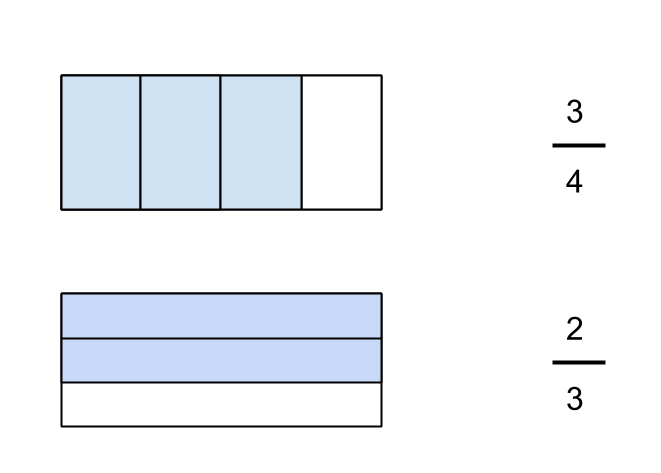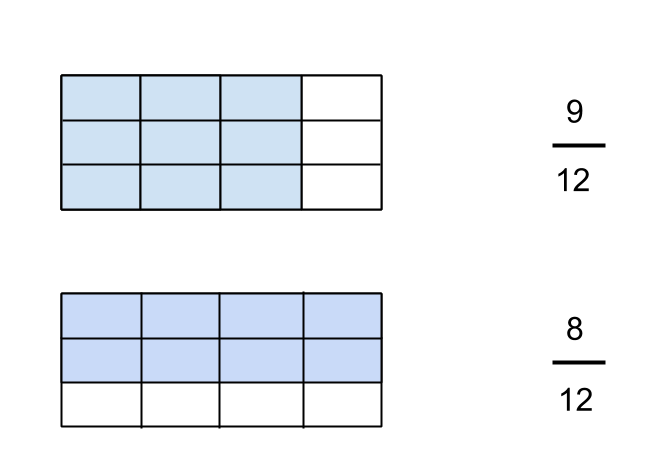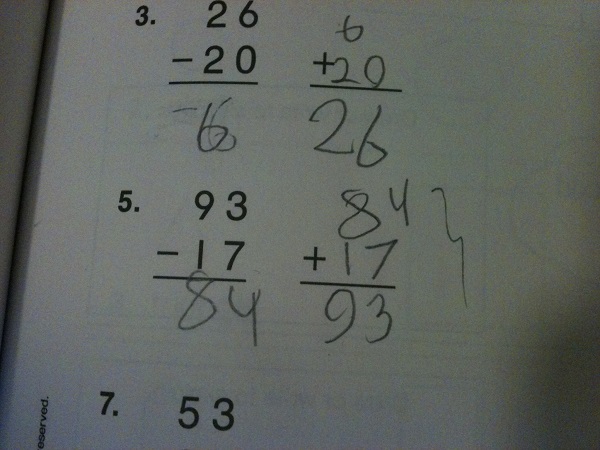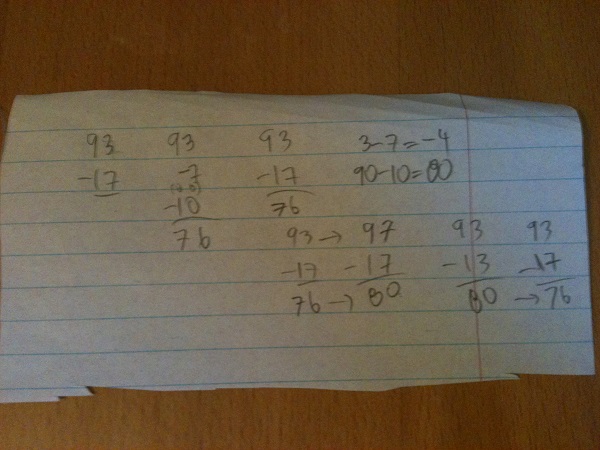Part of my current role is to help teachers use formative assessment in their teaching. This has turned out to have some interesting challenges, and has helped me grow tremendously as a teacher.
Dylan Wiliam and Paul Black define formative assessment as “as encompassing all those activities undertaken by teachers, and/or their students, which provide information to be used as feedback to modify [emphasis mine] the teaching and learning activities in which they are engaged.” (Black and Wiliam, 1998a, p7)1 Another definition I have used is, “A formative assessment or assignment is a tool teachers use to give feedback to students and/or guide their instruction.” Black and Wiliam’s definition is superior because it includes the important “what next” aspect of formative assessment. If the purpose of education is to cause change in a student, formative assessment is the tool that is used to measure and adjust the direction of that change.
My observation is that it depends on how the information collected by teachers is used that ensures if the assessment is formative in nature or not; assessment information not acted on is not formative in nature. The two challenges I have observed in the use of formative assessment are knowing how to act on the information gathered, and being able to find (in an unbiased way) evidence that student thinking has changed based on our instruction.
First, information collected from students can come in a variety of ways. There is the more formal written formative assessment information a teacher can collect, for example: a quiz, an exit slip, a homework assignment, a project, etc… There is also the less formal formative assessment information a teacher can collect (aside: I recommend a clipboard and using a template for quickly recording this kind of information), for example: which students raised their hands to answer a question, how able is a student to explain their reasoning, how does a student respond to another student’s thinking, etc… Each assessment type has its advantages and disadvantages. Formal, written assessment has the advantage that a teacher can look at and think about it when they have time outside of the classroom. The informal assessments have the advantage that a teacher can listen to, make sense of, immediately clarify, and make use of the information.
There are three main ways teachers can effectively respond to assessment information from students.
-
They can use it to guide the next steps of their overall unit planning.
-
They can use it to help plan their next lesson.
-
They can use it immediately to respond to student thinking.
It is most challenging to use formative assessment information immediately, and least challenging to use it to guide an overall unit plan. It is probably worth looking at these opportunities to respond from the most general response, to the most specific.
Formative assessment at the unit level
Imagine you have given a pre-assessment to your students on their knowledge of, and the ability to apply, the Pythagorean theorem to solve for missing lengths in right triangle problems. You discover that the distribution of results for 30 students on the pre-assessment looks something like this, where 4 is given as the cut score2.

Remembering that this assessment is at best a proxy for what students have learned3, what do you do? You can see from the distribution of scores that most students did not achieve the cut-score for the task. The situation is more complex however, because a significant percentage of the students did!
You could teach a mini-unit on this topic with the intention of reviewing the material in more depth for students who reached the cut-score for the assessment, and to teach the material as new for students who did not. This is problematic because many students will feel they know the content, and a common reaction to when teachers teach material that students have been told about before (but not necessarily learned) is that students tune out.
If you do choose to teach a mini-unit, you could monitor progress of all students during it. This will help direct your unit toward the most important sub-skills of the unit, and not cover tasks that students are already fairly able to do. For example, if students are all able to consistently apply the Pythagorean theorem to find the hypotenuse of a right triangle, further explicit instruction in this area is not necessary, but it could be a good way to start a task in order to build on strength.
You could also use re-engagement as an alternative to reteaching. This will allow the students who almost meet the proficiency level for this standard a chance to revisit the work that they did and reflect on it and compare their work with other students. All of your students will hopefully increase their understanding of the focus content during re-engagement, but a potential drawback is that not all of them will necessarily improve their mental models to meet our required proficiency level.
You can also use tasks that target the weaknesses of students (or alternatively build upon their strengths) while still allowing all of your students a chance to grow. A task that has a low entry to accessing the task, but has a high ceiling can be an excellent way to differentiate instruction without having to do a huge amount of planning. This also gives students with more background knowledge a chance to deepen their knowledge by thinking about and discussing other people’s misconceptions. During these tasks, it is also possible to confer with individual students and give targeted support to them.
You could return the work to students but give feedback questions instead of scores on the work itself. This way all students, including those that “mastered” the standard have something to work toward. The research suggests that written comments on student work, without numerical grades, are best to produce the desired outcome in students, which is to reflect on their work.
Remember in your unit planning that every time you decide that “enough students get it, and that it is time to move on”, if this concept is critical to understanding future concepts, you’ve left some students with no support. You should plan to find ways to allow students to re-engage with prior concepts and be able to move forward with the rest of the group. You could, for example, spiral back to previous topics through-out the year (which is good practice for all students).
The overall point you should take away from this section is that formative assessment can, and should, be used to modify (or at least justify) your unit plan. If your unit plan is a map through a section of mathematical territory, formative assessment is a bit like your GPS.
In part two of this post, I will outline some examples of day to day formative assessment.
What other suggestions do you have for teachers who are looking to embed formative assessment in their unit planning process?
Information:
1. Black, P.J., & Wiliam, D. (1998a). Assessment and classroom learning. Assessment in Education: Principles, Policy & Practice
2. A cut-score refers to a score which is used in standards-based assessment that indicates what level students need to reach on a performance task to be considered proficient in the associated standard.
3. All assessment can best measure is a subset of what students are able to do, based on the knowledge and skills they have constructed in their heads. Therefore, all assessments are proxies for what students know. A student who achieves 100% on an assessment does not necessarily understand how to apply a concept 100% of the time, you are best able to say that they were able, on this day, at this time, to write down scribblings we call language which matched your expectations of what those scribblings should look like. This is relevant because you may sometimes find examples of contradictory information, where a student appears on one task to have mastered a standard, and yet appears on another assessment to have not mastered the standard. It also suggests that we can only make the claim that a student has mastered a standard if they have demonstrated proficiency in at least a few contexts.
4. For other examples of formative assessment, see this presentation that I curated. It has 54 different possible formative assessment strategies in it, some of which are more appropriate for a class focused on literacy skills, and some of which are useful for a mathematics classroom.








